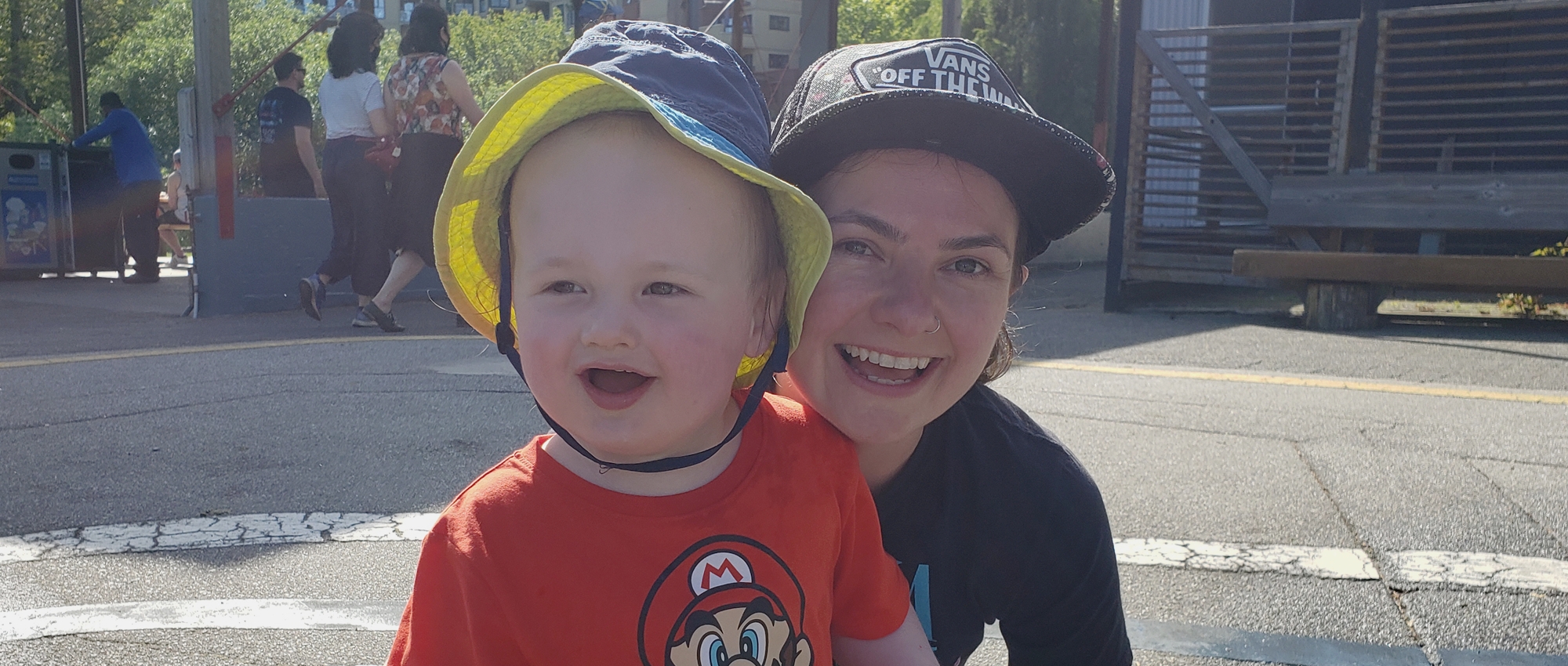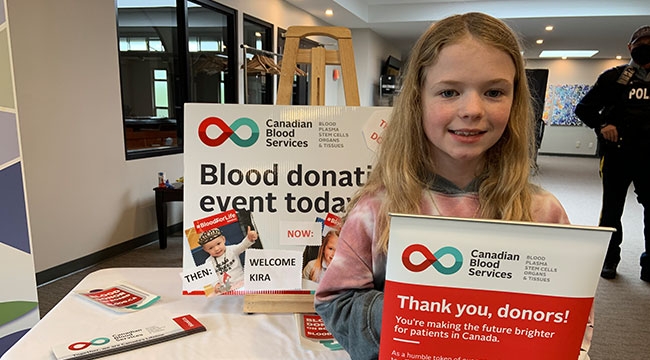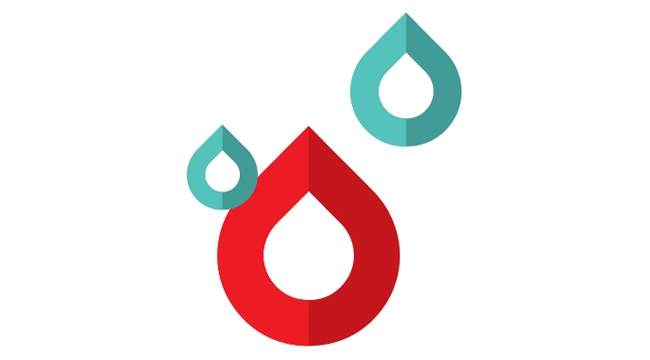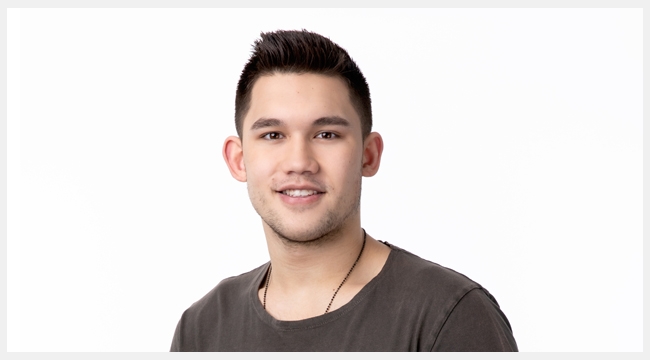Ineligible to donate her own blood, B.C. woman donated cord blood
Elaine O’Keeffe got over a setback and became a champion and donor advocate for Canada’s Lifeline
Elaine O’Keeffe, from Vancouver, B.C., tried to donate blood to help a friend with cancer, only to learn she was ineligible in Canada. However, her disappointment was no match for her determination to help patients. Not only did she become an advocate for Canadian Blood Services, but she successfully donated stem cells using her newborn baby’s cord blood. She shared her story to celebrate the vital role that donors play in Canada’s Lifeline.
For one Vancouver woman, June is a time to celebrate her son’s second birthday and commemorate his lifesaving cord blood donation.
About five years ago, after learning that a friend had been diagnosed with a rare blood cancer, Elaine O’Keeffe decided to donate blood for the first time.
She didn’t know a lot about blood donation but discovered that many cancer patients need blood transfusions as part of their treatment.
“That’s why I wanted to donate in the first place,” she says. “I was so excited and intrigued by the whole process, too. I got the finger prick, my iron level was good, I filled out the paperwork and was ready to start a fantastic tradition of donating blood.”
Ineligible to donate blood
However, during the donor screening process, Elaine learned she was ineligible to donate blood in Canada because of the risks associated with variant Creutzfeldt Jakob Disease or vCJD (the human version of bovine spongiform encephalopathy or "mad cow disease”).
Canadian Blood Services' top priority is the safety of Canada's blood supply. For various reasons, individuals and groups are not eligible to give blood — all based on scientific risk factors.
Although she’s lived in Vancouver, B.C., for more than a decade, Elaine was born in Ireland and spent several years in that part of the world, where cases of vCJD originated. Unfortunately, there is no licensed test available for vCJD. It can be transmitted through blood transfusion, and the incubation period is unknown. “I couldn’t put my disappointment into words,” Elaine says.
Becoming an advocate for Canada’s Lifeline
Several months had passed when a colleague at Elaine’s workplace, RBC Global Asset Management, mentioned they were seeking a Partners for Life champion for Canadian Blood Services.
“Immediately, I knew I was the right person. Even though I couldn’t donate blood, I understood its importance. I felt that taking on this role at work was my calling.”
In March 2018, Elaine became the Partners for Life champion for her organization. Since then, she’s raised awareness about the need for blood and stem cell registrants and organized group donations for her colleagues.
Elaine’s journey to becoming an ambassador for Canada’s Lifeline began with an unexpected setback. But her desire to help others inspired her to explore other ways to help patients.
Donating cord blood
“When I was pregnant, I was booking time slots for my colleagues to donate blood. I discovered that I might be able to donate stem cells and that my baby’s cord blood could help save someone’s life. I emailed the contact person who then confirmed I was eligible and encouraged me to apply, so I did.”

Mothers who are delivering at one of four hospitals in Canada may register to donate their babies’ cord blood.
As Elaine found out, the regulations for stem cell (and organ) donations are different from those that apply for blood donation.
Mothers who are delivering at one of four hospitals in Canada, including the BC Women’s Hospital & Health Centre in Vancouver, may register to donate their babies’ cord blood. Cord blood is the blood that is left in the umbilical cord and placenta after a baby is born.
Cord blood donors could be someone’s hope for life
Cord blood is a rich source of blood-forming and potentially lifesaving stem cells. With the mother’s consent, we collect and store cord blood in Canadian Blood Services’ Cord Blood Bank.
Donated cord blood is made available to any patient in need of a stem cell transplant in Canada or around the world. It can be used in the treatment of more than 80 diseases and disorders, such as leukemia, lymphoma, and aplastic anemia.
At any given time, Canadian Blood Services Stem Cell Registry is searching on behalf of hundreds of Canadian patients who need an unrelated stem cell donor. If not donated, the cord blood left in the umbilical cord and placenta is thrown away as medical waste.
“Part of my decision for giving birth at BC Women’s Hospital was because I knew about the opportunity to donate stem cells using cord blood,” says Elaine.
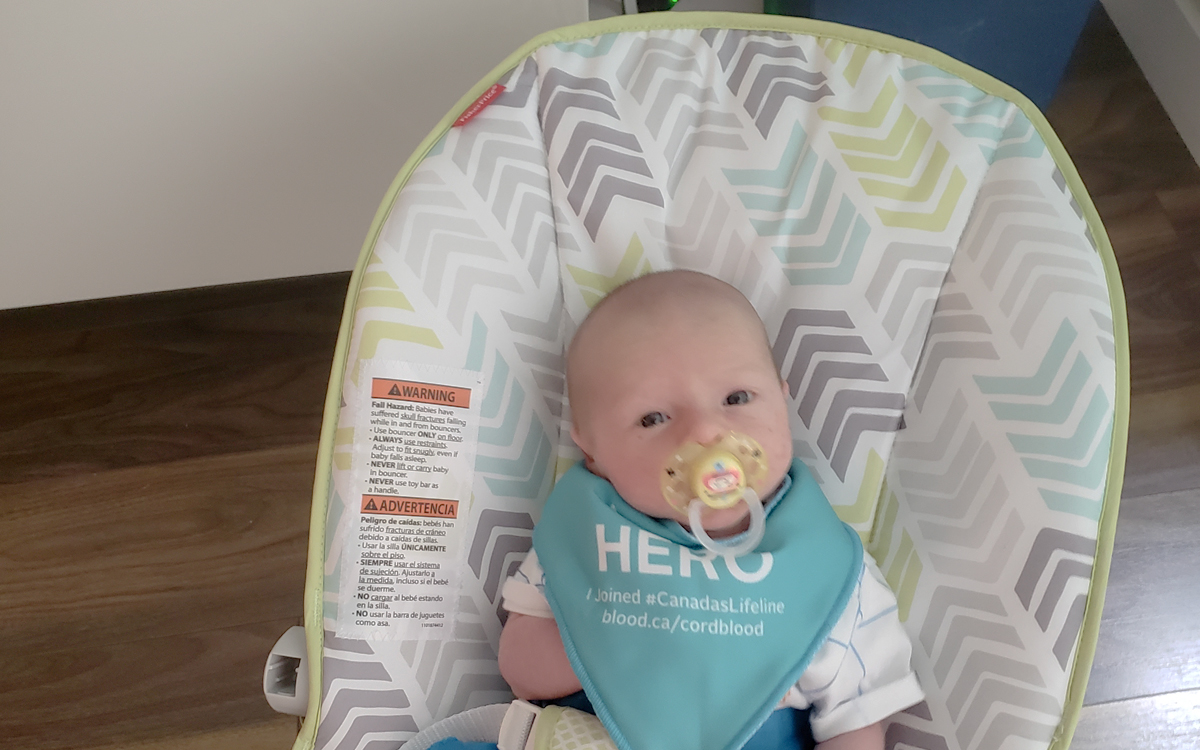
Cord blood from Elaine’s newborn son, Charlie, was donated to Canadian Blood Services' cord blood bank.
On June 19, Charlie will celebrate his second birthday. He’s walking at this point, very active and keeping his mom, Elaine, and his dad, Ryan, on their toes.

A cord blood stem cell donor at birth, Charlie will celebrate his second birthday on June 19
Donations save lives
Elaine appreciates the extra time she’s had at home with her young family during COVID-19. She’s also grateful her friend’s cancer is now in remission and thankful for donors who help meet the needs of patients.
“It is fascinating how many people don’t realize the good they can do for others as a blood donor or stem cell registrant. I tell people they never know whose life their donation might save.”
Every three months, Elaine continues to send messages to nearly 400 co-workers to remind them to donate again or for the first time. Although she is ineligible to donate blood and her support for Canada’s Lifeline didn’t begin as she had planned, Elaine knows people’s lives depend on different types of donors.
Expectant moms can register online to donate their babies’ cord blood. People in Canada between the ages of 17 and 35 can also join Canadian Blood Services Stem Cell Registry online.
This National Blood Donor Week we celebrate the vital role of all donors who help us support patients. From the bottom of our hearts, we thank you for your many contributions. We hope you will continue to support Canada’s Lifeline and spread the word about all ways to donate.
